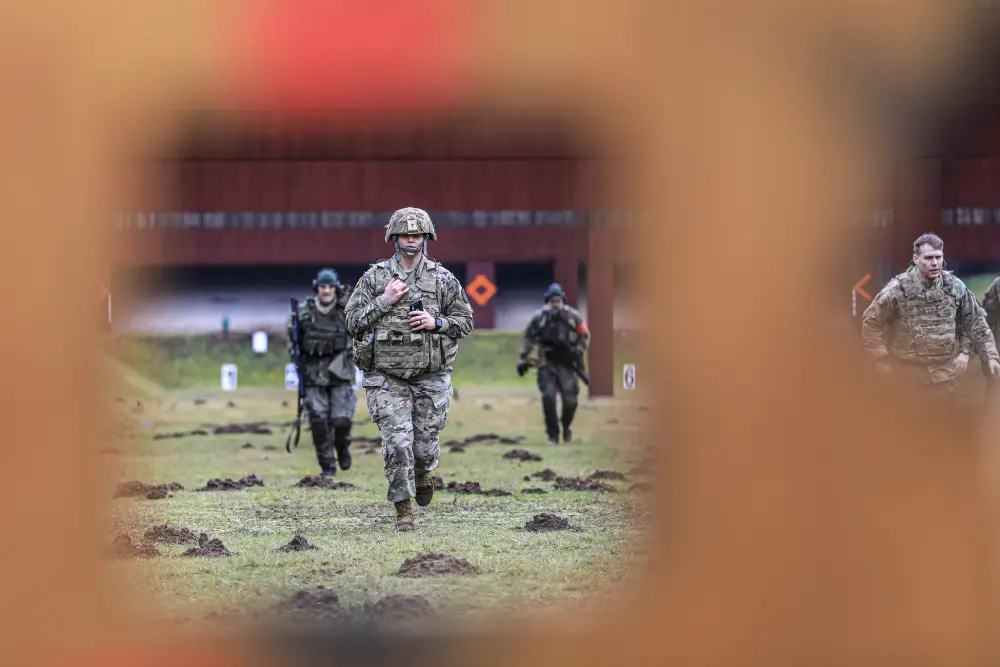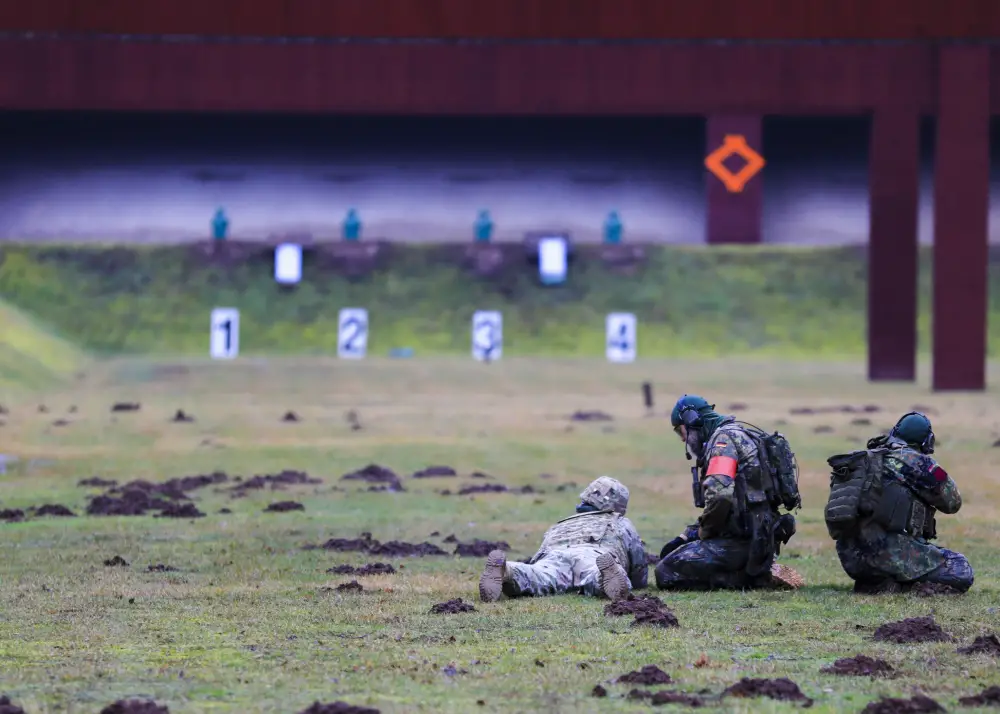On a cold, rainy February afternoon, 27 Soldiers joined German Armed Forces (Bundeswehr) Service Members for a chance to earn the coveted German Armed Forces Badge of Marksmanship, or Schützenschnur, at Breitenwald Range, just outside of Landstuhl Regional Medical Center. The award is authorized for wear for U.S. Soldiers, in adherence with the service’s uniform standard. The decoration, normally awarded to Bundeswehr Service Members, is traditionally a braided lanyard gripping a gold, silver or bronze medallion signifying the grade awarded, with gold being the highest and bronze being the lowest.
During the qualification, Soldiers engaged targets with the G36 German Army rifle, and the German P8 pistol. For U.S. Soldiers, the Schützenschnur presented an opportunity to improve battlefield skills and overall Soldier performance metric, a U.S. Army model of measuring overall lethality of Soldiers. As U.S. Soldiers trained on the G36 rifle and P8 pistol, German counterparts were introduced to the M16 and M4 service rifles, increasing interoperability both ways. For LRMC Soldiers, the event was an opportunity to partner with Host Nation counterparts and learn weapon systems outside of their own arsenal.

“This was a good opportunity for (U.S.) Soldiers to work hand in hand and train with our German counterparts,” said U.S. Army Sgt. 1st Class Richard Aguilar, range officer in charge during the event. “It’s also helping junior (U.S.) Soldiers understand no matter what weapon system you fire, the basic fundamentals are the same. This is my first duty assignment and I’m getting to learn more about different firearms, different services, and different (military) branches,” said Innace. “Working with the local nationals is a great opportunity to see how we can work together to accomplish a common goal. I get to take that back to my soldiers, to push them to do more as well.
The German Armed Forces Badge of Marksmanship Schützenschnur has origins dating back to the 18th Century in the Kingdom of Prussia, current day Germany, and was awarded for marksmanship. While the weapons and firing tables for qualification vary, based off Military Occupational Specialty, a combination of light and heavy-arms fire is required for the award. During the Schützenschnur at Breitenwald Range, U.S. Service Members shot from 250 to five meters away from targets in prone and standing positions.
